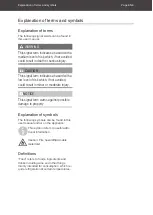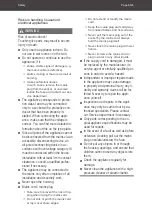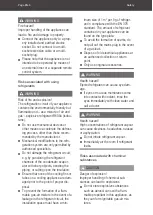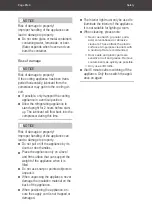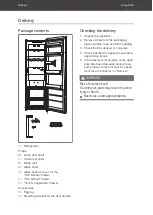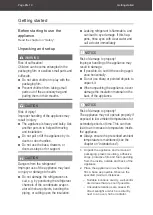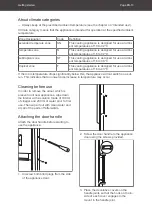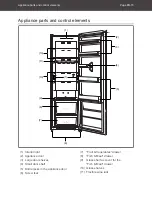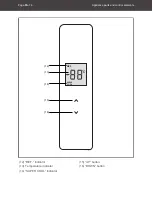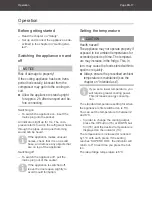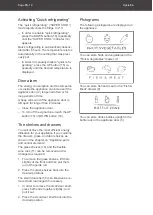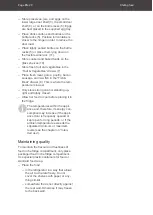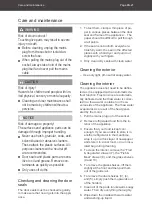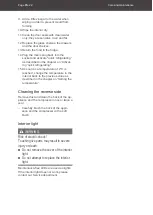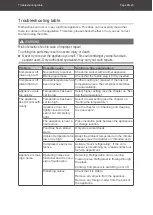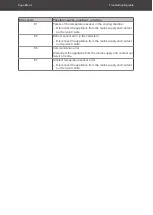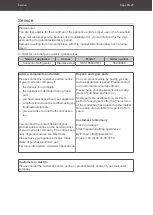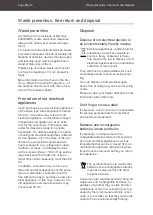
Operation
Page EN-17
Operation
Before getting started
– Read the chapter on “Safety”.
– Set up and connect the appliance as de-
scribed in the chapter on “Getting star-
ted”.
Switching the appliance on and
off
NOTICE
Risk of damage to property!
If the cooling appliance has been trans-
ported horizontally, lubricant from the
compressor may get into the cooling cir-
cuit.
n
Allow the appliance to stand upright
for approx. 2 h after transport and be-
fore connecting.
Switching on
– To switch the appliance on, insert the
mains plug into the socket.
All indicators light up for 3 s. The com-
pressor starts to work, the refrigerant flows
through the pipes and a quiet humming
sound can be heard.
If the appliance makes unusual
noises, check that it is on a solid
base, and remove any objects that
are on top of the appliance.
Switching off
– To switch the appliance off, pull the
mains plug out of the socket.
If the appliance is switched off,
leave the doors open slightly to
avoid mould formation.
Setting the temperature
CAUTION
Health hazard!
The appliance may not operate properly if
exposed to low ambient temperatures for
extended periods of time. The temperat-
ure may increase in the fridge. This, in
turn, may cause the foods stored within to
spoil more quickly.
n
Always ensure the prescribed ambient
temperature is maintained (see the
chapter on “Intended use”).
If you set a lower temperature, you
will require greater cooling power.
This increases energy consump-
tion.
The standard temperature setting for when
the appliance is first switched on is 5°C.
You can set the temperature to between 2
and 8°C.
– In order to change the cooling output,
press the UP button (15) or DOWN but-
ton (16) until the desired temperature is
displayed on the indicator (13).
The temperature is increased or reduced
by 1°C with each press. If the setting
reaches ‘SUPER COOL’, the indicator will
return to 8°C next time you press the but-
ton.
The ideal fridge temperature is 6°C.

